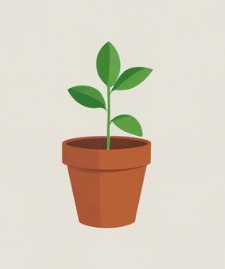Is It the Right Fit for You?
Vertical gardening sounds almost magical, doesn’t it?
You grow loads of food in a tiny space. You don’t have to bend over or pull weeds. It looks great on a balcony or patio. And it feels like the smart, modern way to garden—especially if you don’t have a backyard.
But just like any gardening method, there are trade-offs.
In this article, I’ll walk you through the real benefits and limitations of vertical gardening—based on hours of research, and lots of feedback from people who’ve used everything from stackable pots to high-end systems like the Garden Tower 2.
If you’re thinking of going vertical, this will help you decide if it’s truly the best fit for your space and lifestyle.
✅ The Pros of Vertical Gardening
1. Grow More in Less Space
This is the #1 reason most people start a vertical garden. Instead of spreading out, you grow up. Some systems let you grow 30–50 plants in the same space as a single raised bed.
Perfect for:
- Apartments
- Balconies
- Tiny patios
- Side yards
- Even sunny kitchen corners with grow lights
2. Less Weeding, Less Digging
With planters or tower systems, you’re not dealing with garden beds full of weeds or hard soil. Many gardeners find it easier on the body—and easier on their time.
I personally love that you don’t need to spend weekends battling grass or rototilling soil!
3. Better Airflow and Sunlight
When plants are stacked vertically, they often get better air circulation and more even sun exposure. This can reduce the chance of fungal diseases.
4. Looks Neat and Attractive
Let’s be honest—vertical gardens just look cool. Whether it’s a tower of lettuce or a green wall of herbs, they add life and colour to small spaces.
5. Easier to Harvest
No crouching or crawling through dirt. Just spin the tower (if it rotates) or walk around your setup to pick fresh herbs, greens, or strawberries.
6. Good for Kids, Seniors, and Beginners
Smaller spaces, less mess, and less physical strain make vertical gardens great for:
- Older gardeners
- Kids learning to grow their first food
- Busy people who want easy harvests
❌ The Cons of Vertical Gardening
1. Upfront Cost Can Be High
While you can DIY a basic vertical garden, good-quality systems (like the Garden Tower 2 or GreenStalk) can cost $100–$400. That’s more than a few pots or a bag of soil.
But if you see it as a long-term setup, it can be a smart investment.
2. Watering Needs Care
Vertical gardens dry out faster—especially the upper pockets. You’ll need to water more often or install a drip system. Some people are surprised how quickly things can wilt if they’re not paying attention.
(👉 Check out my article: How to Water a Vertical Garden the Right Way)
3. Not All Plants Work Well Vertically
You’ll have to skip deep-rooted crops like carrots, or huge plants like corn or pumpkins. But leafy greens, strawberries, herbs, and compact peppers do great.
4. Weight and Stability Matter
Once filled with soil and water, towers can get heavy. Make sure your balcony or patio can support the weight, and that your setup is stable in wind.
5. Some DIY Systems Need More Maintenance
Homemade vertical gardens (like pallet walls or stacked buckets) can be cheaper—but they may not drain well or last as long. Be ready to do a bit more upkeep.
🤔 So, Is Vertical Gardening Right for You?
Ask yourself a few quick questions:
- Do I have limited outdoor space?
- Am I mostly growing herbs, greens, or small fruiting plants?
- Do I want something neat, efficient, and low-maintenance?
- Am I okay with a little learning curve for watering and plant selection?
If you answered “yes” to most of those, vertical gardening might be a perfect fit.
🧑🌾 What I Recommend
If you’re just getting started:
- Try a small vertical herb setup first (maybe 3–5 pots or a single tower)
- Start with easy crops like basil, mint, lettuce, or strawberries
- Upgrade later to a bigger system like the Garden Tower 2 if you enjoy it
You don’t have to go all in at once. Vertical gardening is flexible—you can scale it up over time.
📚 What’s Next?
Here are some great beginner articles to help you get started:
- 🌱 What Can You Grow in a Vertical Garden?
- 🪴 Best Vertical Gardening Systems for Small Spaces
- 🧪 Garden Tower 2 Review – Is It Worth It?
- 🛠️ DIY Vertical Gardening Ideas on a Budget
❓FAQ – Vertical Gardening Pros and Cons
Can vertical gardens grow enough to feed a family?
They’re great for herbs, greens, and small crops—but won’t replace a full backyard garden. Many people use them to supplement store-bought food. You would need quite a large set up to replace your weekly vegetable shopping.
Do vertical gardens use less water?
Not always. They dry out faster, so may need more frequent watering. But some systems are designed to recycle water effectively.
Are vertical gardens beginner-friendly?
Yes—as long as you start simple and choose easy plants. They’re low-maintenance once you get the hang of it.
